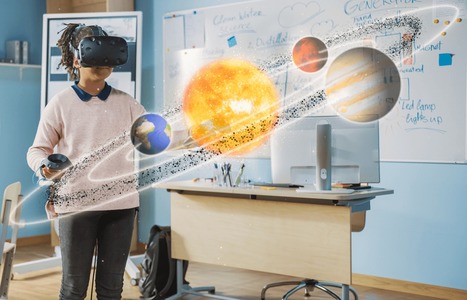As metaverse mania continues, three things appear true.
First, innovation theory suggests that the early successful instances that apply elements of the metaverse will be proprietary in nature. They will be optimized initially to maximize the performance and reliability of an immature technology at the expense of scale and interoperability. That immediately suggests a problem. Many of the instances that are called a metaverse won’t meet a key criterion of Ball’s definition: interoperability. Indeed, much of what passes for metaverse hype right now is still virtual reality clothed in new marketing language.
This may not be a bad thing, however, given concerns about whether the metaverse will be a safe and healthy place for children. Experiences in walled-off gardens—think Prodigy and America Online, not the whole of the World Wide Web—could be safer, at least initially, even though that might temporarily undermine the vision of innovating instruction or skill development through the blockchain or decentralized autonomous organizations.
Second, the metaverse seems more of a sustaining than a disruptive innovation for full-time virtual schools. Unlike disruptions, sustaining innovations improve the performance of an existing product or service to better serve users who already exist. Full-time virtual schools that have sometimes struggled to engage students would likely benefit from a more immersive, social experience. Combining their programs with the metaverse, as well as with in-person learning pods, could create a more robust and accessible schooling experience. Alongside the flexible models of learning that took root during the pandemic, such as pods and hybrid online and in-person programs, a socially rich, immersive metaverse could, eventually, disrupt traditional, brick-and-mortar schools.
Finally, metaverse applications can create educational experiences that are otherwise impossible in a traditional environment. Virtual reality can bring content alive with dynamic images and hands-on digital exploration. It can bring real people and knowledge from other parts of the world into classrooms everywhere. Consider the potential for science labs, language learning, internships, cultural exchanges, and field trips (see “The Educational Value of Field Trips,” research, Winter 2014
Via Canadian Vocational Association / Association canadienne de la formation professionnelle



 Your new post is loading...
Your new post is loading...








As metaverse mania continues, three things appear true.
First, innovation theory suggests that the early successful instances that apply elements of the metaverse will be proprietary in nature. They will be optimized initially to maximize the performance and reliability of an immature technology at the expense of scale and interoperability. That immediately suggests a problem. Many of the instances that are called a metaverse won’t meet a key criterion of Ball’s definition: interoperability. Indeed, much of what passes for metaverse hype right now is still virtual reality clothed in new marketing language.
Finally, metaverse applications can create educational experiences that are otherwise impossible in a traditional environment.
Learn more / En savoir plus / Mehr erfahren:
https://www.scoop.it/topic/21st-century-innovative-technologies-and-developments/?&tag=Metaverse